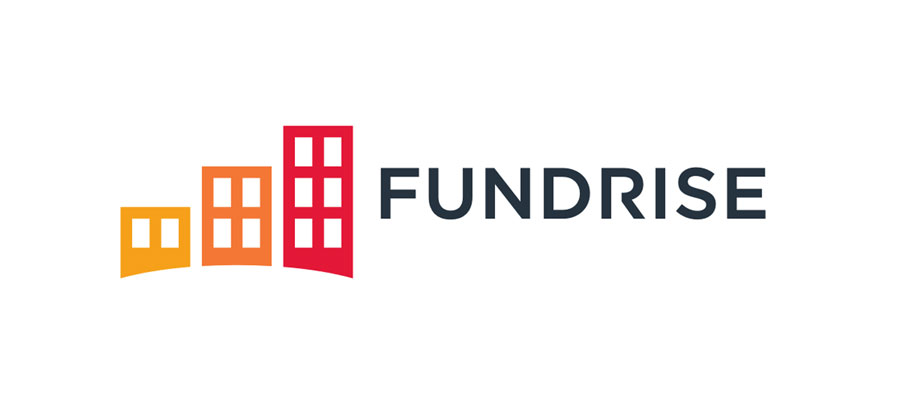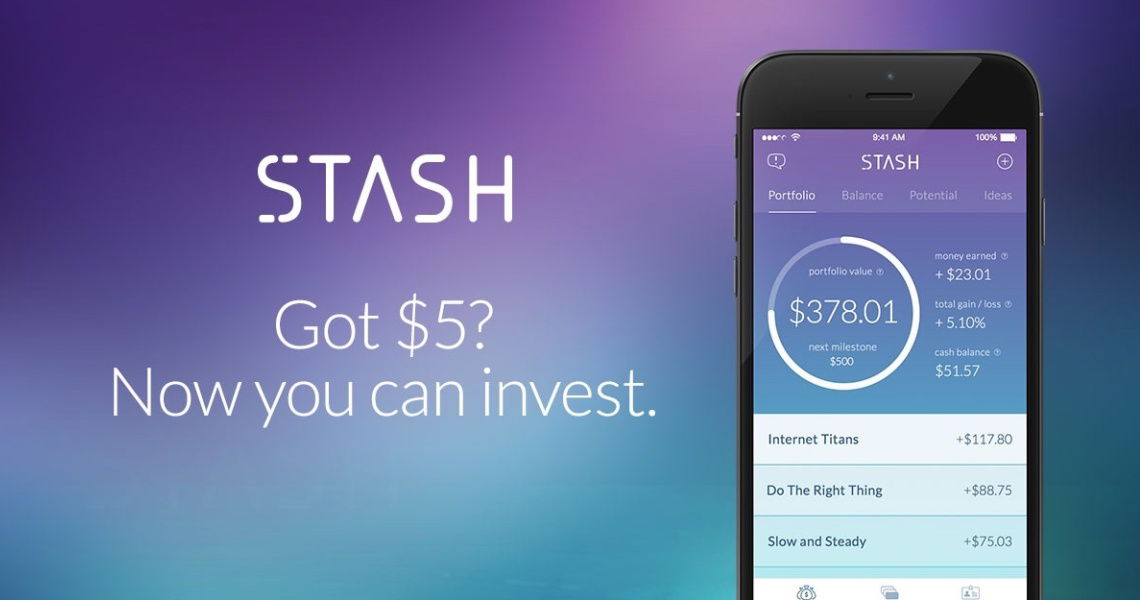Real estate has long been seen as a lucrative investment, but the need for significant capital and expertise often keeps it out of reach for everyday investors. That’s where real estate investing apps like Fundrise come in. By simplifying the process and lowering the barrier to entry, Fundrise makes it possible for anyone to invest in real estate with as little as $10.

Through its innovative platform, Fundrise allows users to access professionally managed portfolios of real estate projects, offering a way to diversify beyond stocks and bonds. Whether you’re looking to generate steady income, build long-term wealth, or explore alternative investments like private credit and venture capital, Fundrise opens the door to opportunities that were once reserved for institutional investors.
In this article, we’ll break down how Fundrise works, who it’s best for, and whether it’s the right fit for your financial goals.
What is Fundrise?
Established in 2010, Fundrise is a pioneering real estate investment platform that opens the door to alternative investments like private real estate, private credit, and venture capital. These non-traditional assets were once accessible only to institutional investors or accredited investors with significant capital, as investing in commercial or multifamily real estate traditionally required meeting strict income or net worth thresholds.
Fundrise has changed the landscape by making these opportunities available to everyday investors. By enabling investments with as little as $10, Fundrise allows users to diversify beyond stocks and bonds while participating in the growth potential of the real estate market. Its direct-to-consumer model eliminates intermediaries, resulting in lower fees and greater transparency for investors.
How does Fundrise work?
Fundrise simplifies real estate investing by offering a range of professionally managed portfolios tailored to different financial goals. From low minimum investments to customized portfolio options, the platform is designed to make real estate accessible to everyday investors.
Getting Started
To begin, create an account on Fundrise and complete a short questionnaire about your financial goals and investment preferences. Based on your responses, Fundrise will recommend one of its four investment plans. Each plan is designed to align with specific objectives, such as generating income, growing wealth, or diversifying your portfolio.
Fundrise Investment Plans
Fundrise offers four distinct plans, each with unique asset allocations and goals:
- Supplemental Income Plan: This plan focuses on generating consistent dividend payments with minimal volatility. It primarily invests in private credit (80%) and income-producing real estate (20%). It’s an ideal option for retirees or near-retirees looking to increase their cash flow. This plan includes the Income Real Estate Fund.
- Balanced Investing Plan: Designed for investors seeking a mix of steady income and long-term growth, this plan allocates funds primarily to growth-oriented real estate assets (90%) and private credit (10%). It’s a good fit for those who want to diversify their portfolios while benefiting from consistent short-term income.
- Long-Term Growth Plan: This plan focuses exclusively on real estate assets that are expected to appreciate over time. It’s best suited for investors with a long time horizon who are comfortable prioritizing capital appreciation over immediate income. This plan includes the Flagship Real Estate Fund.
- Venture Capital Plan: For investors with a high risk tolerance and a long-term outlook, this plan invests in pre-IPO private technology companies, including those in AI and data infrastructure. While it may experience short-term fluctuations, the Innovation Fund aims to deliver risk-adjusted returns over time.
The Investment Process
Once you’ve chosen a plan, Fundrise pools your contributions with those of other investors to acquire or develop real estate projects. These investments include a variety of asset types, such as residential developments, commercial properties, and value-add projects. Fundrise manages the entire process, from property acquisition to ongoing management, ensuring a hands-off experience for investors.
Returns come from two primary sources:
- Dividends generated by rental income from properties.
- Appreciation of real estate assets as their value increases over time.
Dividends are typically distributed quarterly, and investors can reinvest them to maximize growth. Fundrise also provides real-time updates and performance tracking through its user-friendly dashboard.
Fundrise Account Options
Fundrise offers various account types to accommodate different investment needs and goals. Whether you’re investing as an individual, part of a partnership, or through a tax-advantaged account, Fundrise provides options to suit your preferences.
Available Account Types:
- Personal Accounts: Ideal for individual investors looking to grow their portfolios.
- Joint Accounts: Designed for partners or spouses who want to co-manage their investments.
- IRAs: Choose from traditional, Roth, or rollover IRAs to invest in Fundrise’s plans while enjoying tax advantages.
- Entity Accounts: Allows businesses, LLCs, or corporations to invest.
- Trust Accounts: Enables estate planning through investment structures held in trust.
- Advisor-Assisted Accounts: Offers professionals the ability to manage investments for their clients.
This flexibility makes Fundrise accessible to a wide range of investors, from individuals planning for retirement to businesses and trusts seeking to diversify their holdings.
Who is Fundrise best for?
Fundrise appeals to a broad range of investors, but its structure and focus make it more suitable for some than others. Here’s a closer look at who might benefit the most—and who should consider other options.
Ideal Fundrise Users
- Long-Term Investors: Fundrise is best for those who can commit their money for at least five years. The platform’s real estate projects take time to mature, and early withdrawals may incur penalties.
- Moderate Risk Takers: While Fundrise aims to provide stable returns, real estate investments are subject to market fluctuations. Investors who are comfortable with some risk in exchange for potentially higher rewards will find Fundrise appealing.
- Diversification Seekers: Fundrise offers an easy way to diversify beyond traditional stock and bond portfolios. By investing in real estate, you can reduce overall portfolio risk and gain exposure to a different asset class.
- Budget-Conscious Investors: With a low minimum investment of just $10, Fundrise makes real estate accessible to those who don’t have the capital to invest in physical properties or higher-entry platforms.
Who Should Avoid Fundrise
Skeptics of Online Platforms: Fundrise is entirely online, which may be a drawback for individuals who prefer in-person interactions or more traditional investment methods.
Short-Term Investors: If you need quick access to your money, Fundrise isn’t the best option. Real estate investments are illiquid, and withdrawals before the five-year mark may involve delays or penalties.
Those Requiring High Liquidity: Fundrise investments aren’t as flexible as stocks or publicly traded REITs. If liquidity is a priority, consider alternatives like ETFs or liquid REITs.
Pros and Cons of Fundrise
When considering Fundrise, it’s essential to weigh both the benefits and potential drawbacks. This section provides a detailed look at the platform’s key features to help you decide if it’s the right investment choice for your goals.
Pros
Fundrise offers several benefits that make real estate investing more accessible. These include low starting costs, potential for strong returns, and unique features like diversification and a money-back guarantee.
Low Initial Investment
Getting started in real estate often requires tens of thousands of dollars, but Fundrise lowers the barrier with a starting point of just $10. For comparison, traditional investment properties may require a 20% down payment on a $250,000 home—$50,000 upfront. This makes Fundrise an accessible option for those who want to invest in real estate without needing to save a significant amount of capital.
Potential for Real Returns
Fundrise boasts average annual returns between 8.7% and 12.4%. For example, if you invest $1,000 at an 8.7% annual return, your investment could grow to approximately $1,093 after one year. Over five years, with compounding, that same $1,000 could grow to over $1,510, assuming consistent returns. While past performance isn’t a guarantee, these numbers highlight the platform’s potential for meaningful growth.
Diversification
Fundrise spreads your investment across multiple properties to minimize risk. For example, instead of owning a single rental property that might sit vacant, your portfolio might include a mix of stabilized apartment complexes, commercial properties, and development projects. This approach helps balance risks and rewards, so underperforming assets don’t heavily impact your overall returns.
Money-Back Guarantee
Fundrise’s 90-day satisfaction guarantee sets it apart. If you decide the platform isn’t right for you, Fundrise will buy back your initial investment within the first three months. This feature allows new investors to test the waters with minimal financial risk.
Cons
While Fundrise has many strengths, there are a few important limitations to keep in mind. These include fees that aren’t always apparent, limited liquidity, and risks associated with market fluctuations.
Hidden Costs
While Fundrise advertises a 1% annual fee (0.85% for asset management and 0.15% for advisory services), there are additional costs to consider. For example, development fees might range from 2% to 4% of a project’s value, which can impact net returns. These fees are often embedded in project costs and not immediately visible, requiring investors to carefully review offering documents.
Limited Liquidity
Unlike publicly traded REITs or stocks, Fundrise investments are not easy to cash out. For example, if you need your funds within a few years, you may face penalties or delays when withdrawing. While Fundrise offers quarterly redemption opportunities for some plans, it’s not guaranteed, making it important to consider your financial timeline before investing.
No Guarantee on Returns
While the platform has delivered strong returns historically, real estate investments are inherently tied to market conditions. For instance, a market downturn could reduce property values and dividends, impacting your portfolio’s performance. It’s important to weigh this uncertainty when deciding how much of your capital to invest.
Unproven During Recessions
Fundrise began in 2010, after the financial crisis, and hasn’t yet experienced a major recession. If the real estate market faces significant challenges, it’s unclear how well Fundrise’s portfolio will perform. For example, a drop in commercial real estate demand could affect rental income and property values, reducing overall returns.
Comparing Fundrise to Competitors
When evaluating Fundrise, it helps to see how it stacks up against similar platforms like RealtyMogul and CrowdStreet. Here’s a quick comparison:
Fundrise
- Minimum Investment: $10
- Best For: Beginners and those looking for low-cost, diversified portfolios.
- Unique Feature: Starter Portfolio with low fees and a 90-day money-back guarantee.
RealtyMogul
- Minimum Investment: $5,000
- Best For: Investors seeking individual property investments or institutional-grade opportunities.
- Unique Feature: Offers both REITs and access to private equity deals.
CrowdStreet
- Minimum Investment: $25,000
- Best For: High-net-worth individuals looking for direct investments in commercial real estate.
- Unique Feature: Focuses on large-scale, high-quality commercial projects.
Fundrise is the most beginner-friendly, offering accessibility with its low starting cost. While RealtyMogul and CrowdStreet provide more specialized options, they require significantly higher initial investments, making Fundrise the ideal choice for those just starting out or with limited funds.
Tax Implications of Fundrise Investments
Investing with Fundrise can offer significant returns, but understanding the tax implications is crucial. Dividends earned through Fundrise are typically considered taxable income and may be taxed at your ordinary income tax rate. However, if your investment qualifies as a real estate investment trust (REIT), you may be eligible for a 20% pass-through deduction under the Tax Cuts and Jobs Act, which can lower your taxable amount.
Additionally, Fundrise provides annual tax documents, such as Form 1099-DIV, to simplify reporting. For those investing in retirement accounts like IRAs, the tax treatment may differ, offering potential deferrals or exemptions. It’s a good idea to consult with a tax professional to understand how Fundrise fits into your broader tax strategy.
Is Fundrise safe?
Fundrise is a legitimate company that has produced solid returns for many real estate investors. The company received an A+ rating from the Better Business Bureau and has mostly positive customer reviews. So, you don’t have to worry that eREITs are a scam.
That being said, all investments come with a certain amount of risk. So make sure you do your homework first so you can pick the investment option that’s best for you.
Conclusion
Fundrise offers a practical entry point into real estate investing, making it accessible to those who may not have the resources to purchase properties outright. With its low investment minimums, diversified portfolios, and emphasis on long-term growth, it’s an appealing option for investors looking to expand beyond stocks and bonds.
However, Fundrise may not suit everyone. If you prioritize liquidity or prefer short-term investments, the platform’s structure might not align with your needs. It’s important to assess your financial goals and risk tolerance carefully before making a commitment.
Take the time to explore the terms of Fundrise’s portfolios and consider reading customer reviews to gain a better understanding of what to expect. By doing your research and aligning your investment decisions with your overall financial plan, you can determine whether Fundrise is the right fit for your goals.
Fundrise Frequently Asked Questions
Is Fundrise legit?
Fundrise has been a trusted player in the real estate investment space since its inception in 2010. Its innovative approach of offering direct investment opportunities to individuals, bypassing traditional intermediaries, has made it one of the foremost companies in real estate crowdfunding.
If for any reason, you’re not satisfied within the first 90 days of investing, the company will buy back your original investment. All in all, Fundrise is a credible and reliable choice for those looking to dive into the world of real estate investing.
Is Fundrise a good investment?
It certainly can be. Fundrise offers an innovative solution for those wanting to dip their toes into the market. With only a minimal investment required and various portfolio options available, Fundrise provides the flexibility and personalization that’s hard to come by in other conventional real estate investment opportunities.
The company’s emphasis on transparency, minimal fees, and its money-back guarantee all speak to their commitment to delivering the finest experience for their investors. Nonetheless, like any investment, there are always inherent risks and it’s essential to weigh your options carefully and conduct extensive research before making a decision.
Fundrise could certainly be a favorable investment opportunity if you’re looking to diversify your portfolio. However, the success of your investment is contingent upon several factors, such as your financial aspirations and risk tolerance.
Is my money tied up at Fundrise?
It depends on the type of investment plan you choose with Fundrise. Some investment plans have a lock-in period, during which your funds are tied up, and you are unable to withdraw them. This is a common practice in real estate investing to give projects time to mature and generate returns.
However, there are also plans that allow for more flexibility, like the Flagship Fund that offers penalty-free redemptions every quarter. Make sure you carefully read the terms and conditions of your investment plan before committing your funds to ensure that you understand the potential restrictions and requirements.
Does Fundrise pay dividends?
Yes, Fundrise pays dividends to its investors. The frequency of dividend payments depends on the type of investment made, but it’s usually on a quarterly basis. The amount of the dividend payment is determined by the performance of the underlying real estate assets in the portfolio.
In general, real estate investment trusts (REITs), like Fundrise, are required to distribute at least 90% of their taxable income to shareholders in the form of dividends.




